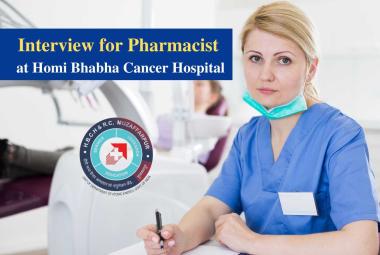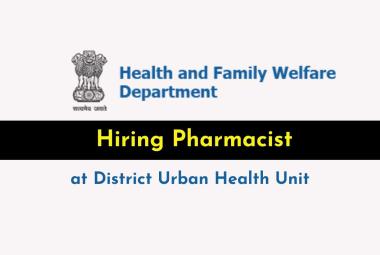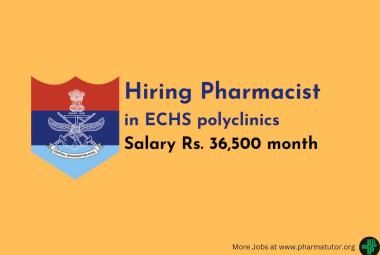{ DOWNLOAD AS PDF }
ABOUT AUTHORS
Md. Asad Ullah*, Bishajit Sarkar, Sohana Hossain, Mohammad Nafi-Ur-Rahman, Md. Shariful Islam
Dept. of Biotechnology and Genetic Engineering,
Jahangirnagar University,
Savar, Dhaka, Bangladesh
ABSTRACT
Microbial infection and contamination have become major concern during last few decades. A vast array of microorganisms is responsible for devastating consequences like- human and other animal infection, food poisoning, resource contamination etc. Beyond this, antimicrobial resistance against many natural, synthetic and semi synthetic compounds has raised our concern about the possible way to get rid of such complication. All classes of people are not accessible to the commercially available antimicrobials due to their expensiveness. Moreover, commercially available antimicrobials are not preferable to everyone due to their toxicity and other side effects. Many phytochemicals and secondary metabolites from plants such as, flavonoids, tannins, terpenoids, essential oil, saponins have been shown to have in vitro antimicrobial activities with less toxicity and side effects. Many of these compounds are even effective against a range of resistant strains. Bangladesh is an agricultural country and tremendous variety of medicinal plants with antimicrobial property is available here. This study has been designed to find out the medicinal plants from Bangladesh with antimicrobial activity, their effective antimicrobial bioactive compounds and the range of microorganisms upon which these compounds are active. Hopefully, this study will raise research interest among researchers about the active antimicrobial agents from medicinal plants.
Reference Id: PHARMATUTOR-ART-2668
|
PharmaTutor (Print-ISSN: 2394 - 6679; e-ISSN: 2347 - 7881) Volume 7, Issue 06 Received On: 09/05/2019; Accepted On: 16/05/2019; Published On: 01/06/2019 How to cite this article: Ullah, A., Hossain, S., Sarkar, B., Nafi-Ur-Rahman, M. and Islam, S. 2019. Phytochemicals and Metabolites as Antimicrobial Agents from Medicinal Plants of Bangladesh : A Review. PharmaTutor. 7, 6 (Jun. 2019), 1-11 |
INTRODUCTION
Medicinal plants are the natural sources of many bioactive compounds which trigger different functions in human body. Wide variety of medicinal plants is being used for the treatment of multiple diseases from ancient time by the people in rural areas around the world (Newman et al., 2000). Numerous plants among them have predominant antimicrobial activities against different pathogenic and non pathogenic microbes (Srivastava et al., 1996). Effective bioactive compounds with antimicrobial activities found in these plants include phytochemicals and many secondary metabolites of pharmaceutical value. Although in vitro screening of many phytochemicals has already been done, potentiality of many compounds is still to be explored (Cowman, 1999). This review article comprises the effectiveness of multiple (50) medicinal plants with antimicrobial activity found in Bangladesh. However, further research study may be required to find out the best possible antimicrobial agent from medicinal plant.
Probable Mechanism of Antimicrobial Action of Plant Derived Compounds
Different plant derived compounds follow different modes of action to exhibit their antimicrobial property. And different plants are effective against different types and strains of microorganisms such as- gram positive and gram negative bacteria and fungi. For example, Saponins usually exhibit antimicrobial property by pore formation in the fungal cytoplasmic membrane. Allicin interacts with the thiol (-SH) group of many enzymes and disrupt their function. Alongside this, Apigenin and Quercetin interrupt the DNA replication process of microorganisms. Yet another types of plant metabolites such as, Resveratrol and Solenopsin A have been shown to exhibit antimicrobial activity by interfering with the cellular communication between multiple microorganisms. A range of other metabolites have been shown to coagulate the intracellular components of microorganisms. Thus the probable mechanisms of antimicrobial activity of plant derived metabolites can be attributed to 5 possible routes- (1) the disruption of membrane function and structure, (2) interruption of DNA/RNA synthesis and function, (3) interference with intermediary metabolism, (4) induction of coagulation of cytoplasmic constituents and (5) interruption of normal cell communication (Radulovic et al., 2013)

Figure 1: Probable mechanisms of antimicrobial action of plant derived compounds. (Modified from Radulovic et al., 2013)
Medicinal Plants of Bangladesh with Antimicrobial Activity
Bangladesh is an excellent repository of medicinal plants and different plants belonging to different family have been used in Ayurvedic and Unani formulation from long period of time (Rahman et al., 2001).
Table 1 listed some medicinal plants of Bangladesh with antimicrobial activity and other information.

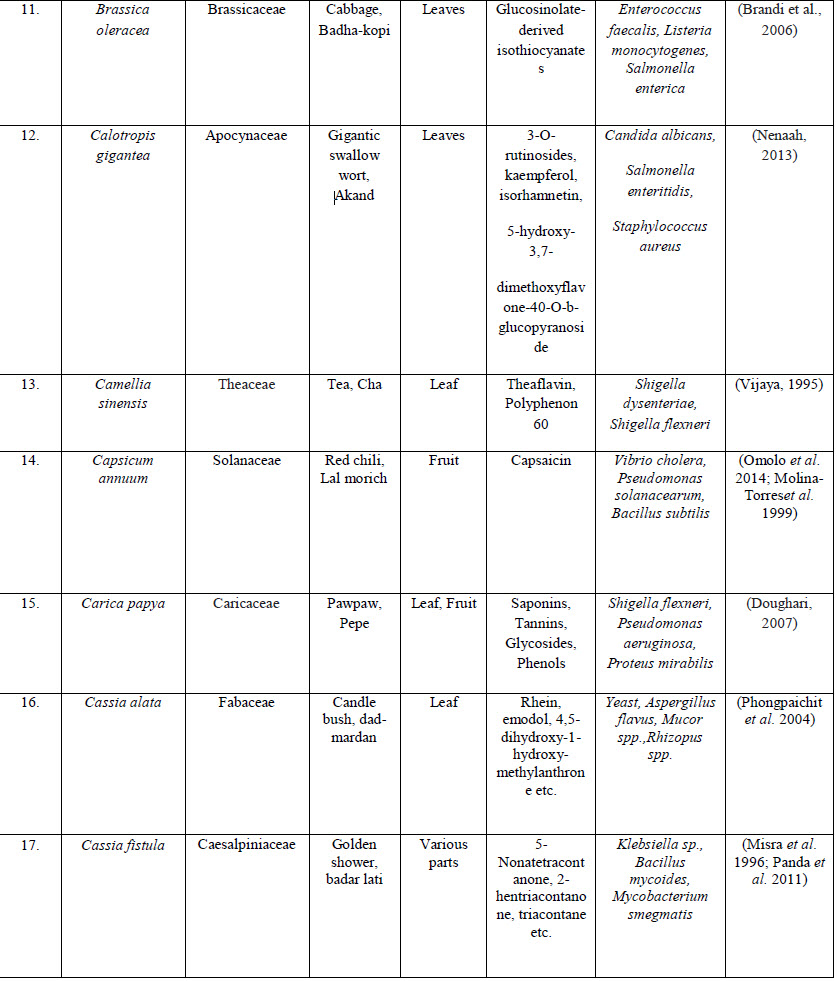


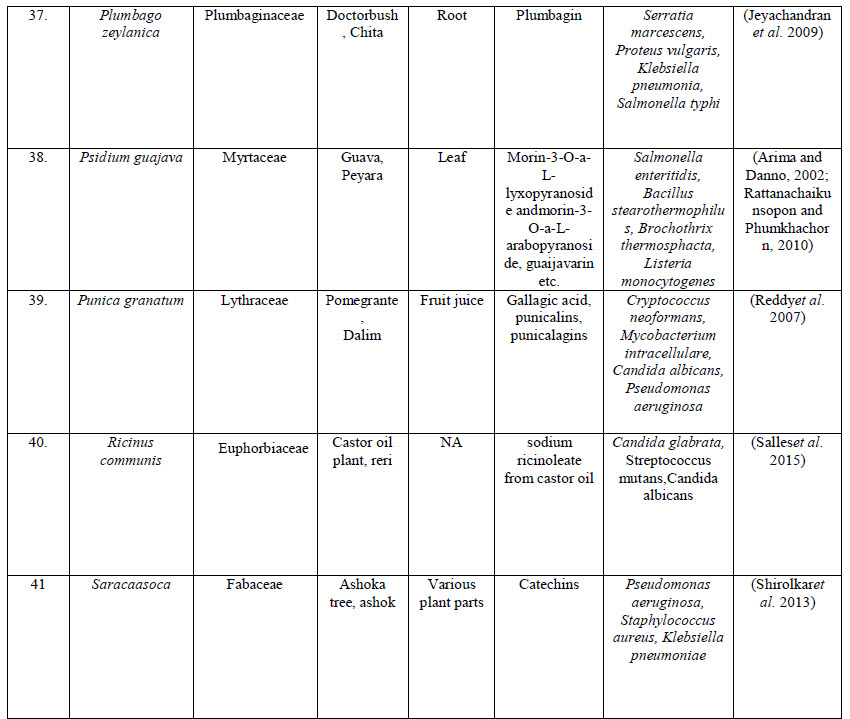

DISCUSSION Variety of medicinal plants possesses different types of secondary metabolites and other phytochemicals which exhibit significant antimicrobial property against variety of microorganisms. Scientists from different field are interested in finding new agent from plant for the use as antimicrobial due to less toxicity and inexpensiveness. Hopefully newly formulated antimicrobials from medicinal plants will be more effective or at least it will be used effectively in combination with commercially available antimicrobials against resistant strains.
CONCLUSION A well directed in vitro study may be required to find the best possible antimicrobial from the medicinal plants. It will be advantageous for the people of all classes to use the less expensive form of medication to treat infection and diseases.
REFERENCES
1. Abukakar, M.G., Ukwuani, A.N. and Shehu, R.A.(2008); Phytochemical screening and antibacterial activity of Tamarindusindica pulp extract;Asian J. Biochem; 3(2); 134-138.
2. Arima, H. and Danno, G.I.(2002); Isolation of antimicrobial compounds from guava (Psidiumguajava L.) and their structural elucidation;Bioscience, biotechnology, and biochemistry;66(8); 1727-1730.
3. Ates, D.A. and Erdogrul, O.T. (2003); Antimicrobial Activities of Various Medicinal and Commercial Plant Extracts;Turkish Journal of Biology;27(3); 157-162.
4. Brandi, G., Amagliani, G., Schiavano, G.F., De Santi, M. and Sisti, M. (2006); Activity of Brassica oleracea leaf juice on foodborne pathogenic bacteria; Journal of food protection; 69(9); 2274-2279.
5. Cavallito, C. J., Bailey, J. H. (1944); Allicin, the Antibacterial Principle of Allium sativum. I. Isolation, Physical Properties and Antibacterial Action; Journal of the American Chemical Society; 66(11); 1950–1951.
6. Chaudhuri, P.K., Srivastava, R., Kumar, S. and Kumar, S. (2004); Phytotoxic and antimicrobial constituents of Bacopa monnieri and Holmskioldia sanguine; Phytotherapy Research: An International Journal Devoted to Pharmacological and Toxicological Evaluation of Natural Product Derivatives; 18(2); 114-117.
7. Chukwujekwu, J.C., Coombes, P.H., Mulholland, D.A. and Van Staden, J. (2006);Emodin, an antibacterial anthraquinone from the roots of Cassia occidentalis;South African Journal of Botany; 72(2); 295-297.
8. Cowan, M.M., (1999); Plant products as antimicrobial agents; Clinical microbiology reviews; 12(4); 564-582.
9. Dasgupta, N., Ranjan, S., Saha, P., Jain, R., Malhotra, S. and Saleh, M.A.A.M.(2012); Antibacterial activity of leaf extract of Mexican marigold (Tageteserecta) against different gram positive and gram negative bacterial strains;J Pharm Res; 5(8); 4201-4203.
10. Dash, B.K., Faruquee, H.M., Biswas, S.K., Alam, M.K., Sisir, S.M. and Prodhan, U.K.(2011); Antibacterial and antifungal activities of several extracts of Centellaasiatica L. against some human pathogenic microbes;Life Sciences and Medicine Research 2011; 1-5.
11. Dhanavade, M.J., Jalkute, C.B., Ghosh, J.S. and Sonawane, K.D.(2011); Study antimicrobial activity of lemon (Citrus lemon L.) peel extract;British Journal of pharmacology and Toxicology;2(3); 119-122.
12. Doughari, J.H. (2006); Antimicrobial activity of Tamarindusindica Linn;Tropical Journal of Pharmaceutical Research; 5(2); 597-603.
13. Doughari, J.H., Elmahmood, A.M. and Manzara, S. (2007); Studies on the antibacterial activity of root extracts of Carica papaya L; African Journal of Microbiology Research; 1(3); 037-041.
14. Dutta, S., Bhattacharyya, D. (2013); Enzymatic, antimicrobial and toxicity studies of the aqueous extract of Ananas comosus (pineapple) crown leaf; Journal of Ethnopharmacology; 150(2); 451–457.
15. Engels, C., Schieber, A. and Gänzle, M.G.(2011); Inhibitory spectra and modes of antimicrobial action of gallotannins from mango kernels (Mangiferaindica L.); Appl. Environ. Microbiol.;77(7); 2215-2223.
16. Gupta, V.K., Fatima, A., Faridi, U., Negi, A.S., Shanker, K., Kumar, J.K., Rahuja, N., Luqman, S., Sisodia, B.S., Saikia, D. and Darokar, M.P.(2008); Antimicrobial potential of Glycyrrhizaglabra roots;Journal of Ethnopharmacology;116(2); 377-380.
17. Hemaiswarya, S., Raja, R., Anbazhagan, C. and Thiagarajan, V.(2009); Antimicrobial and mutagenic properties of the root tubers ofGloriosasuperba Linn.(Kalihari);Pak. J. Bot.; 41(1); 293-299.
18. Hsouna, A.B., Hamdi, N., Halima, N.B. and Abdelkafi, S.(2013); Characterization of essential oil from Citrus aurantium L. flowers: antimicrobial and antioxidant activities;Journal of Oleo Science; 62(10); 763-772.
19. James, J. and Dubery, I.(2009);Pentacyclictriterpenoids from the medicinal herb, Centellaasiatica (L.) Urban;Molecules;14(10); 3922-3941.
20. Jeong, M.R., Kim, H.Y. and Cha, J.D.(2009); Antimicrobial activity of methanol extract from Ficuscarica leaves against oral bacteria;Journal of Bacteriology and Virology;39(2); 97-102.
21. Jeyachandran, R., Mahesh, A., Cindrella, L., Sudhakar, S. and Pazhanichamy, K.(2009); Antibacterial activity of Plumbagin and root extracts of Plumbago zeylanica; ActaBiologica Cracoviensia Series Botanica; 51(1); 17-22.
22. Karthikeyan, A., Shanthi, V. and Nagasathaya, A.(2009); Preliminary phytochemical and antibacterial screening of crude extract of the leaf of Adhatodavasica. L;International Journal of Green Pharmacy (IJGP);3(1).
23. Kharel, P., Manandhar, M.D., Kalauni, S.K., Awale, S. and Baral, J. (2011); Isolation, identification and antimicrobial activity of a Withanolide [WS-1] from the roots of Withaniasomnifera; Nepal Journal of Science and Technology;12; 179-186.
24. Lawrence, R., Tripathi, P. and Jeyakumar, E. (2009); Isolation, purification and evaluation of antibacterial agents from Aloe vera; Brazilian Journal of Microbiology; 40(4); 906-915.
25. Ledezma, E., Apitz-Castro, R. (2006); Ajoene, el principal compuesto activo derivado del ajo (Allium sativum), un nuevo agente antifúngico; Revista Iberoamericana de Micología; 23(2); 75–80.
26. Mandal, S., Patra, A., Samanta, A., Roy, S., Mandal, A., Mahapatra, T.D., Pradhan, S., Das, K. and Nandi, D.K. (2013); Analysis of phytochemical profile of Terminalia arjuna bark extract with antioxidative and antimicrobial properties; Asian Pacific journal of tropical biomedicine; 3(12); 960-966.
27. McGaw, L.J., Jäger, A.K., Van Staden, J. and Eloff, J.N. (2002); Isolation of β-asarone, an antibacterial and anthelmintic compound, from Acorus calamus in South Africa; South African Journal of Botany; 68(1); 31-35.
28. Misra, T.N., Singh, R.S., Pandey, H.S. and Pandey, R.P.(1996); Chemical constituents of hexane fraction of Cassia fistula pods;Fitoterapia; 67(2); 173-174.
29. Molina-Torres, J., Garcı́a-Chávez, A. and Ramı́rez-Chávez, E. (1999); Antimicrobial properties of alkamides present in flavouring plants traditionally used in Mesoamerica: affinin and capsaicin;Journal of ethnopharmacology;64(3); 241-248.
30. Nenaah, G. (2013); Antimicrobial activity of Calotropis procera Ait.(Asclepiadaceae) and isolation of four flavonoid glycosides as the active constituents; World Journal of Microbiology and Biotechnology; 29(7); 1255-1262.
31. Newman, D.J., Cragg, G.M., Snader, K.M. (2000); The influence of natural products upon drug discovery; Natural product reports; 17(3); 215-234.
32. Okwu, D.E. and Igara, E.C.(2009); Isolation, characterization and antibacterial activity of alkaloid from Daturametel Linn leaves;African Journal of Pharmacy and Pharmacology;3(5); 277-281
33. Omolo, M.A., Wong, Z.Z., Mergen, K., Hastings, J.C., Le, N.C., Reil, H.A., Case, K.A. and Baumler, D.J.(2014); Antimicrobial properties of chili peppers;Journal of Infectious Diseases and Therapy; 2(4).
34. Oskoueian, E., Abdullah, N., Ahmad, S., Saad, W.Z., Omar, A.R. and Ho, Y.W.(2011); Bioactive compounds and biological activities of Jatrophacurcas L. kernel meal extract; International journal of molecular sciences;12(9); 5955-5970.
35. Panda, S.K., Padhi, L.P. and Mohanty, G.(2011); Antibacterial activities and phytochemical analysis of Cassia fistula (Linn.) leaf;Journal of advanced pharmaceutical technology & research;2(1); 62-67.
36. Phongpaichit, S., Pujenjob, N., Rukachaisirikul, V. and Ongsakul, M.(2004); Antifungal activity from leaf extracts of Cassia alata L., Cassia fistula L. and Cassia tora L;Songklanakarin J SciTechnol;26(5); 741-48.
37. Pinto, E., Vale-Silva, L., Cavaleiro, C. and Salgueiro, L.(2009); Antifungal activity of the clove essential oil from Syzygiumaromaticum on Candida, Aspergillus and dermatophyte species;Journal of medical microbiology;58(11); 1454-1462.
38. Radulovic, N.S., Blagojevic, P.D., Stojanovic-Radic, Z.Z. and Stojanovic, N.M. (2013); Antimicrobial plant metabolites: structural diversity and mechanism of action; Current medicinal chemistry; 20(7); 932-952.
39. Ragasa, C.Y., Puno, M.R.A., Sengson, J.M.A.P., Shen, C.C., Rideout, J.A. and Raga, D.D. (2009); Bioactive triterpenes from Diospyrosblancoi; Natural product research; 23(13); 1252-1258.
40. Rahman, S., Hasnat, A., Hasan, C. M., Rashid, M. A., & Ilias, M. (2001); Pharmacological Evaluation of Bangladeshi Medicinal Plants — a Review; Pharmaceutical Biology; 39(1); 1–6.
41. Rahman, S., Akbor, M.M., Howlader, A. and Jabbar, A.(2009); Antimicrobial and cytotoxic activity of the alkaloids of Amlaki (Emblica officinalis);Pakistan Journal of Biological Sciences; 12(16); 1152-1155.
42. Raja, M., Ravikumar, S., Gnanadesigan, M. and Vijayakumar, V. ( 2010). In vitro antibacterial activity of diterpene and benzoxazole derivatives from Excoecaria agallocha L; International Journal of Biological and Chemical Sciences, 4(3); 692-701
43. Rattanachaikunsopon, P. and Phumkhachorn, P.(2010); Contents and antibacterial activity of flavonoids extracted from leaves of Psidiumguajava;Journal of Medicinal Plants Research; 4(5); 393-396.
44. Reddy, M.K., Gupta, S.K., Jacob, M.R., Khan, S.I. and Ferreira, D.(2007); Antioxidant, antimalarial and antimicrobial activities of tannin-rich fractions, ellagitannins and phenolic acids from Punicagranatum L; Plantamedica; 53(05); 461-467.
45. Salles, M.M., Badaro, M.M., Arruda, C.N.F.D., Leite, V.M.F., Silva, C.H.L.D., Watanabe, E., Oliveira, V.D.C. and Paranhos, H.D.F.O.(2015); Antimicrobial activity of complete denture cleanser solutions based on sodium hypochlorite and Ricinuscommunis–a randomized clinical study; Journal of Applied Oral Science; 23(6); 637-642.
46. Salman, M.T., Khan, R.A. and Shukla, I.(2008); Antimicrobial activity of Nigella sativa Linn. seed oilagainst multi-drug resistant bacteria from clinical isolates; Natural Product Radiance; 7(1); 10-14.
47. Sa-Nguanpuag, K., Kanlayanarat, S., Srilaong, V., Tanprasert, K., Techavuthiporn,C.. (2011); Ginger (Zingiber officinale) oil as an antimicrobial agent for minimally processed produce: a case study in shredded green papaya; International Journal of Agriculture & Biology; 13(6); 895-901.
48. Satheesh, L.S. and Murugan, K. (2011); Antimicrobial activity of protease inhibitor from leaves of Coccinia grandis (L.); Indian Journal of Experimental Biology; 49; 366-374
49. Sathiamoorthy, B., Gupta, P., Kumar, M., Chaturvedi, A.K., Shukla, P.K. and Maurya, R. (2007). New antifungal flavonoid glycoside from Vitex negundo; Bioorganic & medicinal chemistry letters; 17(1); 239-242.
50. Sato, Y., Oketani, H., Singyouchi, K., OHTSUBO, T., KIHARA, M., SHIBATA, H. and HIGUTI, T.(1997); Extraction and purification of effective antimicrobial constituents of Terminalia chebulaRETS. against methicillin-resistant Staphylococcus aureus; Biological and Pharmaceutical Bulletin; 20(4); 401-404.
51. SATO, Y., OKETANI H., YAMADA T., SINGYOUCHI, K.I., OHTSUBO, T., KIHARA, M., SHIBATA, H. and HIGUTI, T.(1997); A Xanthanolide with Potent Antibacterial Activity against Methicillin resistant Staphylococcus aureus; Journal of pharmacy and pharmacology; 49(10); 1042-1044.
52. Sen, A., Dhavan, P., Shukla, K.K., Singh, S. and Tejovathi, G. (2012); Analysis of IR, NMR and antimicrobial activity of β-sitosterol isolated from Momordica charantia; Sci Secure J Biotechnol, 1(1); 9-13.
53. Shah, K.A., Patel, M.B., Patel, R.J. and Parmar, P.K.(2010); Mangifera indica (mango); Pharmacognosy reviews; 4(7); 42–48.
54. Shirolkar, A., Gahlaut, A., Chhillar, A.K. and Dabur, R.(2013); Quantitative analysis of catechins in Saracaasoca and correlation with antimicrobial activity; Journal of pharmaceutical analysis; 3(6); 421-428.
55. Siddiqui, A.A., Wani, S.M., Rajesh, R. and Alagarsamy, V.(2006); Phytochemical and pharmacological investigation of flowers of Hibiscus rosa sinensis linn; Indian journal of pharmaceutical sciences;68(1); 127-130.
56. Singh, S., Malhotra, M. and Majumdar, D.K.(2005); Antibacterial activity of Ocimum sanctumL. fixed oil; 43; 835-837.
57. Singh, B. and Sharma, R.A. (2013); Anti-inflammatory and antimicrobial properties of pyrroloquinazoline alkaloids from Adhatodavasica Nee; Phytomedicine;20(5); 441-445.
58. Singha, P.K., Roy, S., Dey, S. (2003); Antimicrobial activity of Andrographis paniculata; Fitoterapia; 74(7-8); 692-694.
59. Srivastava, J., Lambert, J. and Vietmeyer, N. (1996); antimicrobial activity of Anogeissus latifolia. Medicinal plants: An expanding role in development; J. Ethnopharmacol.; World Bank Technical; 106(320); 57-61.
60. Uddin, B., Hossan, T., Paul, S., Ahmed, T., Nahar, T. and Ahmed, S.(2010); Antibacterial activity of the ethanol extracts of Hibiscus rosa-sinensis leaves and flowers against clinical isolates of bacteria; Bangladesh J. Life Sci;22(2); 65-73.
61. Umamaheswari, A., Nuni, A. and Shreevidya, R.(2010); Evaluation of antibacterial activity of Boerhaaviadiffusa L. leaves; International Journal of Green Pharmacy (IJGP);4(2);75-77.
62. Venkatesan, D., Karrunakarn, C.M., Kumar, S.S. and Swamy, P. ( 2009); Identification of phytochemical constituents of Aegle marmelos responsible for antimicrobial activity against selected pathogenic organisms; Ethnobotanical Leaflets; (11); 4.
63. Vijaya, K., Ananthan, S. and Nalini, R. (1995); Antibacterial effect of theaflavin, polyphenon 60 (Camellia sinensis) and Euphorbia hirta on Shigella spp.—a cell culture study; Journal of ethnopharmacology; 49(2); 115-118.
64. Ye, C.L., Dai, D.H. and Hu, W.L., (2013); Antimicrobial and antioxidant activities of the essential oil from onion (Allium cepa L.); Food control; 30(1), 48-53.
65. ZorofchianMoghadamtousi, S., Abdul Kadir, H., Hassandarvish, P., Tajik, H., Abubakar, S. and Zandi, K.(2014); A review on antibacterial, antiviral, and antifungal activity of curcumin; BioMed research international; 2014; 1-12
NOW YOU CAN ALSO PUBLISH YOUR ARTICLE ONLINE.
SUBMIT YOUR ARTICLE/PROJECT AT editor-in-chief@pharmatutor.org
Subscribe to Pharmatutor Alerts by Email
FIND OUT MORE ARTICLES AT OUR DATABASE




